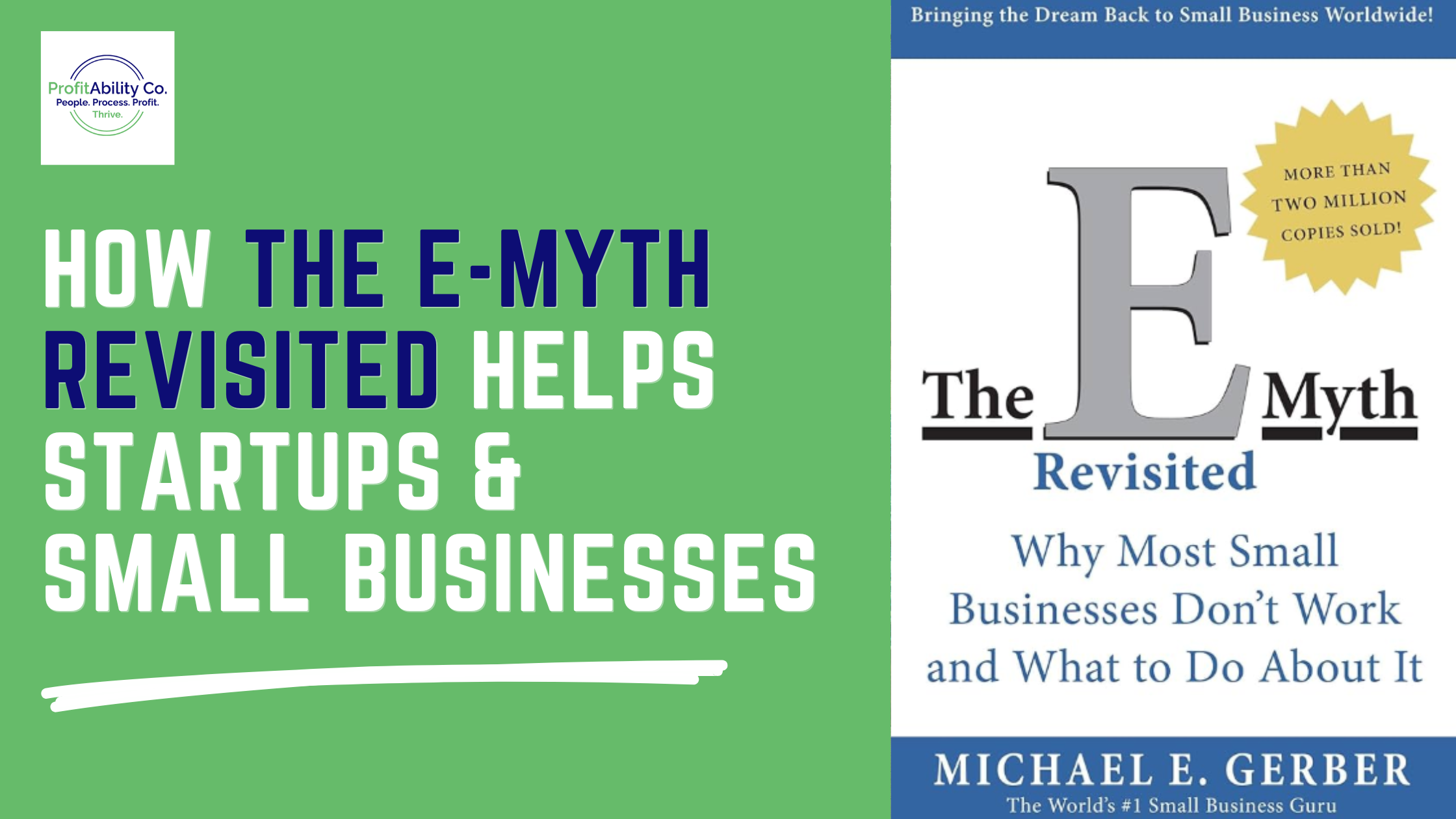How The E-Myth Revisited Helps Startups & Small Businesses
A practical guide with actions and examples
Running a business is exciting, but it can also be exhausting.
I’m Sarah Colgate, a Business Improvement Professional who helps entrepreneurs and small business owners run things smoother, more profitably, and with far less stress. Over the years, I’ve seen too many business owners get stuck working harder and harder, yet not getting ahead.
The truth?
Success isn’t just about passion or hustle, it’s about building the right systems, structures, and strategies that allow your business to grow without burning you out. That’s exactly why books like The E-Myth Revisited resonate so deeply: they show that the real product is not just what you sell, but the business itself.
Let’s explore how Gerber’s lessons can be put into action, with simple steps and real-world examples for startups and small businesses.
1. Start With Systems, Not Just Passion
Gerber’s Lesson: Being good at the craft doesn’t mean you can run the business.
Action: From day one, write down how you do things so they can be repeated.
Example: A startup coffee cart creates a simple checklist for setup (water, milk, cups, machine prep). Now, a casual staff member can follow it without the owner being there.
Example: A freelance web designer writes a standard onboarding questionnaire for new clients so projects start consistently.
Takeaway for startups: Don’t just sell your skill. Build processes that someone else can run.
2. Design an Org Chart: Even If You’re in Every Box
Gerber’s Lesson: Every business needs defined roles, not just people.
Action: Draw up an organizational chart with every role your business needs in 1–3 years. Then put your name in each box for now.
Example: A new landscaping business maps roles: Sales, Admin, Marketing, Finance, Operations, Customer Service. Today, it’s just John in all the boxes but tomorrow, he can hire an admin to take one box off his plate.
Example: A boutique candle startup has roles for Production, Marketing, Fulfillment, Customer Care. Founder Emma is in all boxes for now, but this roadmap shows her what to hire next.
Takeaway for startups: Growth feels less overwhelming when you’ve mapped out the structure ahead of time.
3. Balance the Three Hats (Technician, Manager, Entrepreneur)
Gerber’s Lesson: Owners must shift beyond “doing the work.”
Action: Block time every week to step into the Manager and Entrepreneur roles.
Example: A personal trainer spends all week coaching sessions (Technician). Instead, he blocks Friday afternoons to review client retention data (Manager) and brainstorms new group programs (Entrepreneur).
Example: A tour operator leads tours daily (Technician). She assigns one tour per week to a staff guide, freeing time to develop partnerships with hotels (Entrepreneur).
Takeaway for startups: Growth only happens when you deliberately create non-doing time.
https://www.emyth.com/inside/the-three-business-personalities-entrepreneur-manager-technician
4. Innovate, Measure, Standardize
Gerber’s Lesson: Innovation → Quantification → Orchestration.
Action: Test small changes, measure them, and lock in what works.
Example: A food truck tests two different Instagram ad messages. The one with a free-drink offer converts 3x better → they standardize it.
Example: An online craft store tests handwritten thank-you cards. Sales data shows repeat orders increase by 15% → they add it to every order.
Takeaway for startups: Don’t just guess. Test, track, and scale what works.
5. Work on the Business, Not Just in It
Gerber’s Lesson: Your business is the product. Build it to run without you.
Action: Each week, pick one task you do → document it → delegate or automate.
Example: A small cleaning company documents their “End-of-Job Checklist” (vacuum, wipe, trash removal, photo of space). This makes training new staff simple.
Example: An ecommerce store automates abandoned cart emails instead of manually following up, freeing the owner to focus on new products.
Takeaway for startups: Every system you create today saves hours tomorrow.
6. Think Like a Franchisor (Even if You’ll Never Franchise)
Gerber’s Lesson: Build your business as if you’ll franchise it.
Action: Ask yourself: If someone else bought my business tomorrow, could they run it without me?
Example: A yoga studio creates a “class delivery manual” (how to greet clients, class music playlist, closing script). Now every teacher delivers the same experience.
Example: A mobile dog grooming startup standardises van setup, customer communication, and post-appointment follow-ups. The business is consistent no matter who’s driving the van.
Takeaway for startups: Investors, partners, and buyers want businesses that don’t depend on one person.
7. Build for Freedom, Not Just Survival
Don’t underfund your strategy and then wonder why it underdelivers.
Gerber’s Lesson: A true business gives you time, money, and creative freedom.
Action: Identify one area where the business traps you → systemize or outsource it.
Example: A café owner stuck on payroll hires a bookkeeper 4 hours/month. Now weekends aren’t lost to all the admin.
Example: A social media consultant uses scheduling tools so posts go live automatically, freeing nights to focus on strategy.
Takeaway for startups: Every system is a step toward freedom, not just survival.
Quick-Start Checklist for Startups & Small Businesses
Write your org chart (put your name in every box for now).
Document one process per week (customer service, sales, delivery).
Block two hours per week to think strategically, not tactically.
Start tracking 3 key metrics (e.g., leads, conversions, revenue per client).
Delegate or automate one recurring task within 30 days.
Startups often believe hustle alone drives success.
The E-Myth Revisited shows the opposite: it’s not just about working harder, it’s about designing a business that works without you.
The earlier you apply these lessons, the sooner you’ll create a business that’s scalable, sellable, and freeing.
Conclusion
The big takeaway from The E-Myth Revisited is this: your business should be designed to give you freedom, not just another job that ties you down.
Every system you create, every process you document, every role you map out — it’s a step toward a business that works for you, not because of you.
But I know it’s easier said than done. That’s where I come in. My role is to help you uncover the hidden opportunities, fix the inefficiencies, and build a roadmap that makes your business more profitable and less stressful.
👉 If you’re ready to stop being trapped in your business and start building one that scales, let’s talk.
Book a Business Analysis with me today, together we’ll identify exactly what’s holding your business back and create a clear plan for growth.
Let’s build you a business that works.
Stop Working Harder, Start Working Smarter
Structuring Your Business for Success
Unlocking Hidden Profits: The Power of a Business Analysis
Self-Sufficient Business: How to Build One




